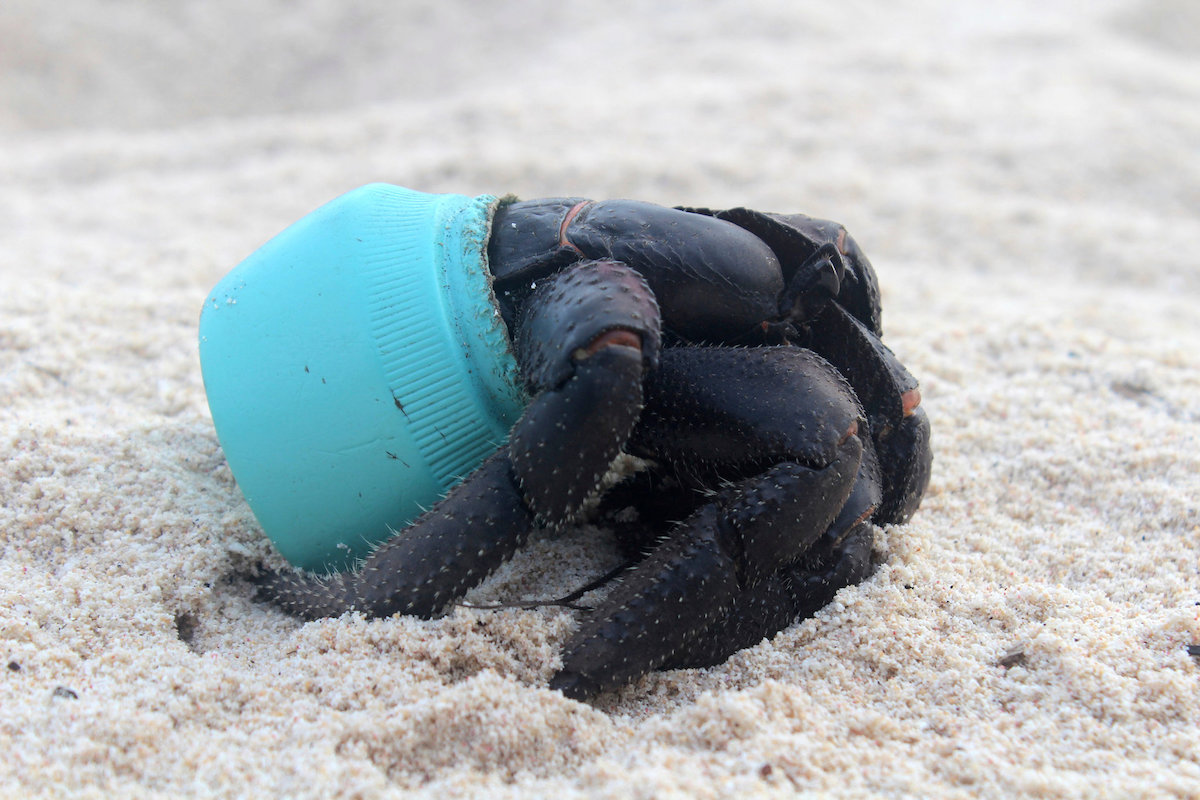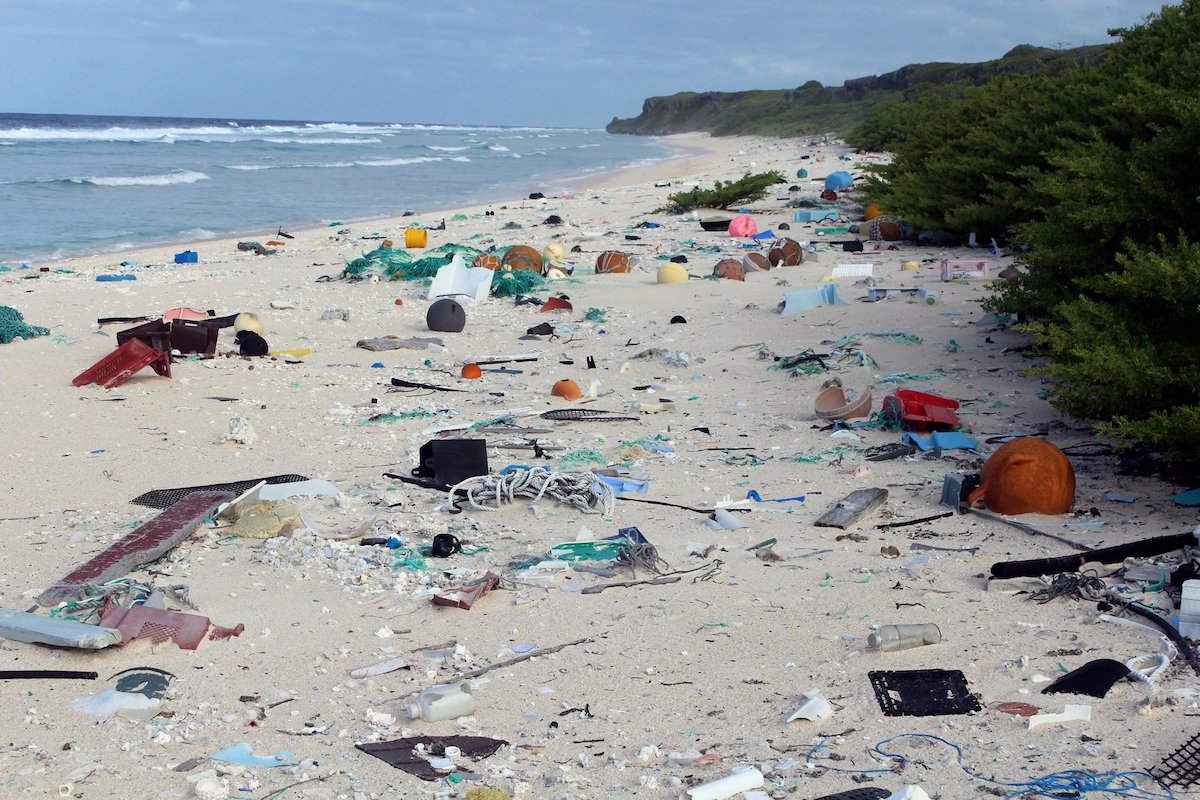About halfway between Chile and New Zealand lies Henderson Island. Seven scientists from the University of Tasmania visited this small, coral island in 2015 and discovered green toy soldiers, red hotels from the Monopoly board game, cigarette lighters, tooth brushes and so much more. The researchers counted more than 53,100 pieces of trash, almost all of it plastic. Sitting on the edge of an ocean current that picks up trash called the Southern Gyre, the uninhabited island was declared a World Heritage site in 1988 because of its pristine state and four endemic bird species. Now, it’s a monument to our world’s runaway, careless overuse of disposable plastics.
The issue of plastics is a full-bore crisis. According to a 2016 report by the World Economic Forum, if current trends hold, in 2050 there will more plastic than fish by weight in the ocean. The toxic plastics don’t just wash ashore to places like Henderson Island, but some of it breaks down into tiny fragments called microplastics. NOAA has found that at least 100 species of fish are consuming the microplastics, which eventually make their way up the food chain to people. Meantime, Belgium’s Ghent University finds that regular seafood eaters in Europe are currently ingesting up to 11,000 microplastics a year.
Below, photos from Henderson Island that help to illustrate the problem.
.jpg) East Beach Henderson Island. Photo: Tara Proud
East Beach Henderson Island. Photo: Tara Proud.jpg) Researchers counted more than 53,100 pieces of trash, almost all of it plastic, on Henderson Island. Photo: Jennifer Lavers
Researchers counted more than 53,100 pieces of trash, almost all of it plastic, on Henderson Island. Photo: Jennifer Lavers Henderson Island. Photo: Jennifer Lavers
Henderson Island. Photo: Jennifer Lavers Henderson Island. Photo: Jennifer Lavers
Henderson Island. Photo: Jennifer Lavers 





.gif)



